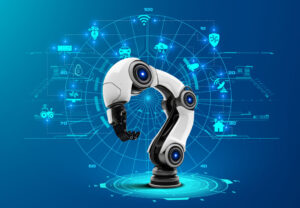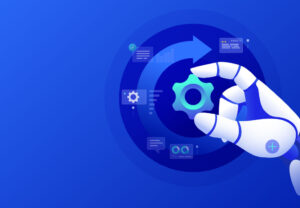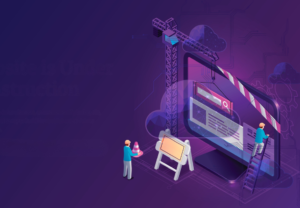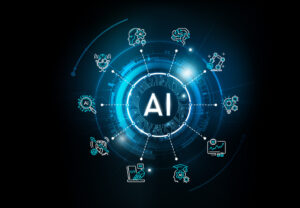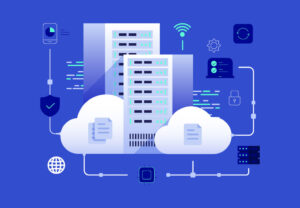Engineering Accelerated Outcomes: Integrating DevOps for Optimal Cloud Delivery
“Modern enterprises require sophisticated cloud-native DevOps adoption strategies to navigate complex DevOps cloud migration pain points whilst implementing robust hybrid cloud DevOps frameworks. Organisations must optimise cloud delivery pipelines through strategic DevOps automation tools for multi-cloud environments, integrating DevSecOps in enterprise cloud deployment alongside CI/CD integration for distributed teams. Digital transformation cloud DevOps lessons demonstrate that infrastructure as code for cloud migration, combined with predictive analytics in DevOps cloud delivery, delivers measurable competitive advantages through accelerated deployment cycles and enhanced operational resilience.”
Digital transformation imperatives have fundamentally altered the competitive landscape for modern enterprises. Executive leadership across industries faces mounting pressure to deliver software solutions with unprecedented speed whilst maintaining operational excellence and security compliance. The convergence of DevOps methodologies with cloud computing represents a strategic imperative for organisations seeking sustainable competitive advantage through technological innovation.
Contemporary research validates this strategic focus. According to comprehensive industry analysis, 86% of technology professionals identify DevOps as critical for rapid software delivery capabilities. Organisations demonstrating mature DevOps practices achieve remarkable operational outcomes: [1]
- a) Deploy code 208 times more frequently than traditional approaches [1]
- b) Experience 50% fewer software defects in production environments [1]
- c) Demonstrate measurably improved time-to-market capabilities
The 2024 State of DevOps Report by Google Cloud further emphasises how platform engineering combined with artificial intelligence adoption significantly improves development productivity whilst reducing operational burnout across technical teams. These findings establish a compelling business case for integrated DevOps-cloud strategies that drive optimal delivery outcomes through systematic process improvement and technological modernisation. [2]
DevOps for Cloud
DevOps represents a fundamental shift in software development methodology, combining development and operations teams to create unified workflows that prioritise collaboration, automation, and continuous improvement. The core principles encompass cultural transformation, process standardisation, and technology integration designed to eliminate traditional silos between development and operational functions.
Cloud computing serves as a powerful catalyst for DevOps implementation, providing on-demand scalability, infrastructure flexibility, and global accessibility that traditional on-premises environments cannot match. The synergy between DevOps practices and cloud capabilities creates interdependent strategies that deliver measurable business value through:
- a) Reduced infrastructure provisioning time from weeks to minutes
- b) Enhanced ability to scale applications based on real-time demand
- c) Improved disaster recovery and business continuity capabilities
- d) Cost optimisation through pay-per-use resource consumption models
Netflix provides a compelling example of successful DevOps-cloud integration. The organisation completed a comprehensive migration to Amazon Web Services over seven years, adopting microservices architecture and continuous integration/continuous delivery pipelines. This transformation resulted in quantifiable business outcomes including near-perfect uptime, eight-fold subscriber growth, and a thousand-fold increase in streaming hours from 2007 to 2015. [3] These results demonstrate how strategic DevOps-cloud integration creates sustainable competitive advantages through operational excellence and customer experience enhancement.
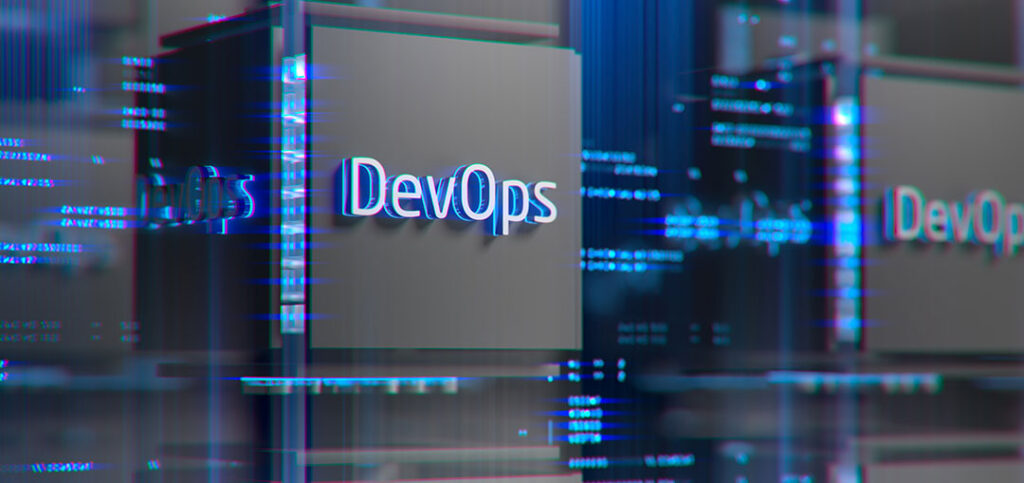
Pillars of Successful Cloud DevOps Integration
Successful cloud DevOps integration relies on four fundamental pillars that create comprehensive operational excellence across the software development lifecycle.
Continuous Integration and Continuous Delivery (CI/CD) Implementation
CI/CD pipelines form the operational backbone of modern software delivery, enabling early bug detection and frequent application updates. These automated workflows ensure that code changes are systematically validated, tested, and deployed with minimal manual intervention. Organisations implementing robust CI/CD practices experience:
- a) Reduced deployment risk through automated testing and validation
- b) Faster feedback loops that improve development team productivity
- c) Enhanced code quality through consistent review and testing processes
- d) Improved customer satisfaction through more frequent feature releases
Infrastructure as Code (IaC) Adoption
Infrastructure as Code represents a paradigm shift from manual server configuration to programmatic infrastructure management. IaC enables organisations to define, provision, and manage infrastructure resources through machine-readable configuration files. This approach provides:
- a) Consistent environment provisioning across development, testing, and production
- b) Version-controlled infrastructure changes that support audit requirements
- c) Rapid scaling capabilities that respond to changing business demands
- d) Reduced operational overhead through automated resource management
Automation in Quality Assurance and Performance Testing
Comprehensive test automation ensures that applications meet quality standards whilst supporting rapid release cycles. Automated testing frameworks validate application functionality, performance characteristics, and security compliance without manual intervention. Key benefits include:
- a) Improved test coverage through systematic validation processes
- b) Reduced time-to-market through parallel testing execution
- c) Enhanced confidence in release quality through consistent validation
- d) Lower operational costs through reduced manual testing requirements
Monitoring and Feedback Loops Implementation
Real-time monitoring and feedback mechanisms provide visibility into application performance and user experience. Advanced monitoring tools create comprehensive dashboards that enable proactive issue identification and resolution. These capabilities support:
- a) Proactive incident response through early warning systems
- b) Data-driven decision making through comprehensive performance metrics
- c) Improved customer experience through rapid issue resolution
- d) Enhanced operational efficiency through automated alert mechanisms
ING Bank’s transformation exemplifies these principles in practice. The organisation implemented Forrester’s Continuous Delivery and Release Automation model, resulting in improved time-to-market and enhanced development productivity. This approach demonstrates how systematic implementation of DevOps pillars creates measurable business value through operational excellence and customer satisfaction improvement. [4]
Overcoming Organisational and Technical Challenges
DevOps-cloud integration presents significant organisational and technical challenges that require systematic approaches to achieve successful outcomes.
Cultural Transformation Requirements
Cultural transformation represents the most complex aspect of DevOps adoption, requiring fundamental changes in team collaboration, skill development, and organisational structure. Successful transformation initiatives focus on:
- a) Comprehensive upskilling programmes that develop cross-functional capabilities
- b) Breaking down traditional silos between development and operations teams
- c) Establishing shared accountability for application performance and customer outcomes
- d) Creating collaborative workflows that prioritise collective success over individual achievement
Legacy Systems Migration Complexity
Legacy system modernisation presents substantial technical and operational challenges that require carefully planned migration strategies. Organisations must balance operational continuity with modernisation objectives through:
- a) Phased migration approaches that minimise business disruption
- b) Comprehensive training programmes that prepare teams for new technologies
- c) Real-time dashboards that provide visibility into migration progress and performance
- d) Risk mitigation strategies that ensure business continuity throughout the transformation.
Lincoln Financial provides an instructive example of successful legacy modernisation. The organisation modernised 120 legacy systems within two years, achieving significant cost reductions whilst improving operational agility. This transformation demonstrates how systematic approaches to legacy modernisation create sustainable competitive advantages. [5]
Security and Compliance Integration
DevSecOps practices integrate security considerations throughout the development lifecycle, ensuring that applications meet regulatory requirements whilst maintaining rapid deployment capabilities. Key components include:
- a) Automated security scanning integrated into CI/CD pipelines
- b) Compliance validation through programmatic policy enforcement
- c) AI-driven threat detection that identifies potential security vulnerabilities
- d) Comprehensive audit trails that support regulatory compliance requirements
Financial services organisations particularly benefit from integrated security approaches. A Fortune 500 retail company implemented AI-generated Infrastructure as Code across multi-cloud environments, achieving 70% faster deployments alongside 25% cost savings whilst maintaining strict security and compliance standards. These results demonstrate how advanced automation tools can simultaneously improve operational efficiency and security posture. [6]
Advanced Tooling and Automation Ecosystem
Modern DevOps-cloud integration requires sophisticated tooling ecosystems that support multi-cloud and hybrid infrastructure environments whilst providing comprehensive automation capabilities.
Multi-Cloud and Hybrid Infrastructure Tools
Contemporary organisations increasingly adopt multi-cloud strategies that leverage capabilities from Amazon Web Services, Microsoft Azure, and Google Cloud Platform. Essential tools include:
- a) Terraform for infrastructure provisioning across multiple cloud providers
- b) Docker containerisation for application portability and consistency
- c) Kubernetes orchestration for automated container management and scaling
- d) Cloud-native security tools that provide consistent protection across environments
Automation and Orchestration Capabilities
Advanced automation frameworks optimise cost management and scalability through intelligent resource allocation and performance monitoring. Key capabilities encompass:
- a) Automated resource scaling based on real-time demand patterns
- b) Cost optimisation through intelligent resource provisioning and decommissioning
- c) Performance monitoring that identifies bottlenecks and optimisation opportunities
- d) Incident response automation that reduces mean time to resolution
Real-Time Monitoring and Analytics
Comprehensive monitoring solutions provide visibility into application performance, infrastructure utilisation, and user experience metrics. Essential components include:
- a) Nagios Core for infrastructure monitoring and alerting
- b) Machine learning-based anomaly detection that identifies unusual patterns
- c) Automated incident response workflows that reduce operational overhead
- d) Predictive analytics that anticipate potential issues before they impact users
TiLa, a Saudi Arabian e-commerce organisation, demonstrates these principles through successful implementation of AWS CloudFormation and CI/CD pipelines. The company achieved 25% cost reduction, reduced downtime to 0.1%, and improved deployment speed by 30 minutes. These results illustrate how advanced tooling creates measurable operational improvements that translate directly into business value. [7]
Future Directions
The future of DevOps-cloud integration increasingly incorporates artificial intelligence, serverless architectures, and hybrid cloud strategies that provide enhanced flexibility and operational resilience.
Artificial Intelligence and Machine Learning Integration
AI and ML technologies transform DevOps capabilities through predictive scaling, automated monitoring, and self-healing infrastructure. Key applications include:
- a) Predictive scaling algorithms that anticipate resource requirements based on historical patterns
- b) Automated monitoring systems that identify and resolve issues without human intervention
- c) Self-healing infrastructure that automatically recovers from failures and performance degradation
- d) Intelligent resource allocation that optimises performance whilst minimising costs
Serverless Architecture Adoption
Serverless computing platforms such as AWS Lambda and Azure Functions enable agile deployment strategies that eliminate infrastructure management overhead. Benefits encompass:
- a) Reduced operational complexity through managed infrastructure services
- b) Enhanced scalability through automatic resource provisioning
- c) Cost optimisation through consumption-based pricing models
- d) Improved development productivity through simplified deployment processes
Hybrid and Multi-Cloud Evolution
The rise of hybrid and multi-cloud architectures provides organisations with enhanced visibility, flexibility, and operational resilience. Strategic advantages include:
- a) Reduced vendor lock-in through diversified cloud provider relationships
- b) Enhanced disaster recovery capabilities through geographic distribution
- c) Improved performance through optimised workload placement
- d) Increased flexibility in regulatory compliance and data sovereignty requirements
McKinsey research identifies artificial intelligence, containers, Internet of Things, and edge computing among the top frontier technologies transforming cloud and DevOps practices. These technologies function as foundational amplifiers across all technical domains, creating new opportunities for operational excellence and competitive advantage. [8]

Measuring, Governing, and Communicating Value
Effective DevOps-cloud integration requires comprehensive measurement frameworks, governance structures, and communication strategies that demonstrate business value to executive leadership.
Key Performance Indicator Dashboards
Comprehensive KPI dashboards provide real-time visibility into migration velocity, cost performance, and operational metrics. Essential measurements include:
- a) Deployment frequency and lead time metrics that demonstrate delivery capability
- b) Mean time to recovery indicators that show operational resilience
- c) Cost per transaction measurements that validate financial efficiency
- d) Customer satisfaction scores that reflect user experience quality
Governance and Reporting Frameworks
Centralised governance structures ensure consistent policy enforcement and intervention capabilities across distributed teams. Key components encompass:
- a) Standardised reporting mechanisms that provide executive visibility
- b) Automated compliance monitoring that identifies policy violations
- c) Performance benchmarking that compares results against industry standards
- d) Risk management frameworks that identify and mitigate potential issues
Continuous Improvement Methodologies
Data-driven decision making processes enable continuous improvement through systematic analysis and optimisation. Essential practices include:
- a) Regular retrospective sessions that identify improvement opportunities
- b) A/B testing frameworks that validate change effectiveness
- c) Feedback loops that incorporate customer and stakeholder input
- d) Iterative improvement cycles that build on previous successes
A global pharmaceutical organisation demonstrates these principles through successful implementation of a product-based DevOps model. The company reduced deployment time by 75%, achieved 100% compliance with regulatory requirements, and decreased total cost of ownership by 35%. These results illustrate how systematic measurement and governance create sustainable operational improvements that deliver measurable business value. [9]
Conclusion
The integration of DevOps methodologies with cloud computing represents a strategic imperative for modern enterprises seeking competitive advantage through technological excellence. Successful implementation requires comprehensive approaches that address cultural transformation, technical modernisation, and governance frameworks whilst leveraging advanced automation tools and emerging technologies.
Organisations that successfully navigate cloud-native DevOps adoption strategies whilst addressing DevOps cloud migration pain points through robust hybrid cloud DevOps frameworks achieve measurable competitive advantages. The systematic optimisation of cloud delivery pipelines through strategic DevOps automation tools for multi-cloud environments, combined with comprehensive DevSecOps integration in enterprise cloud deployment, creates sustainable operational excellence.
The evidence demonstrates that organisations implementing CI/CD integration for distributed teams whilst applying digital transformation cloud DevOps lessons achieve superior business outcomes. Infrastructure as code for cloud migration combined with predictive analytics in DevOps cloud delivery provides the foundation for accelerated deployments, enhanced operational visibility, and secure, reliable business outcomes that drive sustainable competitive advantage in an increasingly digital marketplace.
Motherson Technology
Services leverages these advanced trends, practices, and tools to position clients ahead of industry rivals through comprehensive DevOps-cloud integration strategies. By implementing cutting-edge automation frameworks, multi-cloud orchestration platforms, and AI-driven predictive analytics, Motherson Technology Services enables organisations to achieve accelerated deployment cycles, enhanced operational visibility, and secure business outcomes that drive sustainable competitive advantage.
Executive leadership must prioritise the adoption of proven DevOps-cloud strategies to achieve measurable return on investment and operational resilience. The time for incremental change has passed; organisations require comprehensive transformation initiatives that create lasting competitive advantages through technological excellence and operational innovation.
References
[1] https://cloud.google.com/devops/state-of-devops?hl=en
[2] https://www.cloudzero.com/blog/devops-statistics/
[3] https://www.simform.com/blog/netflix-devops-case-study/
[6] https://www.theaiops.com/case-study-successful-aiops-implementation-in-a-fortune-500-company/
[10] https://www.devopsdigest.com/devops-and-cloud-integration-best-practices
[11] https://binmile.com/blog/cloud-and-devops-practices-to-increase-business-agility/
[12] https://www.kovair.com/blog/integrating-cloud-technologies-for-devops-challenges-and-tips/
[13] https://radixweb.com/blog/complete-guide-of-cloud-devops
[14] https://amzur.com/blog/devops-cloud-combination-benefits/
[19] https://www.browserstack.com/guide/cloud-devops
[20] https://www.sciencedirect.com/science/article/pii/S0950584923000046
[21] https://docs.aws.amazon.com/whitepapers/latest/introduction-devops-aws/introduction-to-devops.html
[22] https://www.qovery.com/blog/best-devops-automation-tools/
[23] https://www.forrester.com/blogs/devops-present-and-future/
[24] https://www.invensislearning.com/blog/impact-cloud-computing-in-devops/
[25] https://duplocloud.com/white-papers/devops/
[26] https://duplocloud.com/white-papers/cloud-migration/
[27] https://www.clickittech.com/devops/devops-best-practices/
[28] https://www.turing.com/blog/6-devops-best-practices
[29] https://www.n-ix.com/devops-trends/
[30] https://www.geeksforgeeks.org/blogs/top-devops-trends/
[31] https://cloud.google.com/blog/products/devops-sre/announcing-the-2024-dora-report
About the Author:

Dr. Bishan Chauhan
Head – Cloud Services & AI / ML Practice
Motherson Technology Services
With a versatile leadership background spanning over 25 years, Bishan has demonstrated strategic prowess by successfully delivering complex global software development and technology projects to strategic clients. Spearheading Motherson’s entire Cloud Business and global AI/ML initiatives, he leverages his Ph.D. in Computer Science & Engineering specializing in Machine Learning and Artificial Intelligence. Bishan’s extensive experience includes roles at Satyam Computer Services Ltd and HCL prior to his 21+ years of dedicated service to the Motherson Group.

 September 19, 2025
September 19, 2025 Dr. Bishan Chauhan
Dr. Bishan Chauhan



